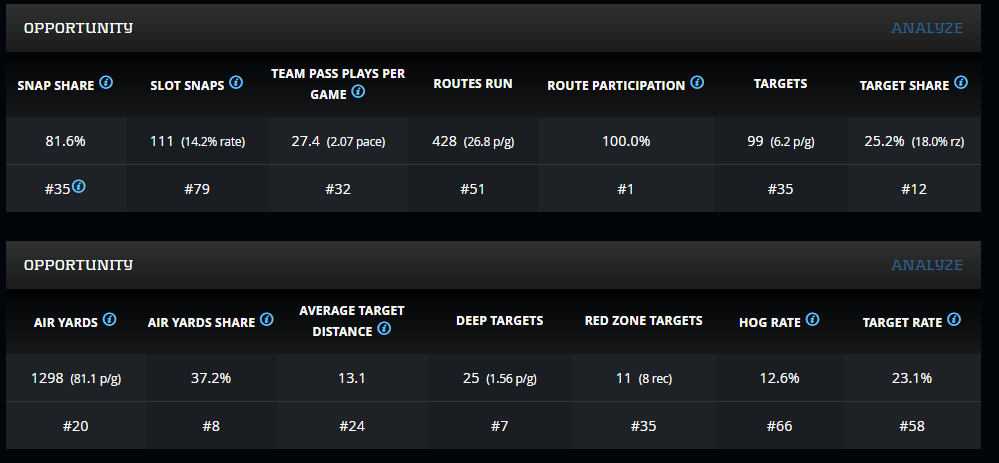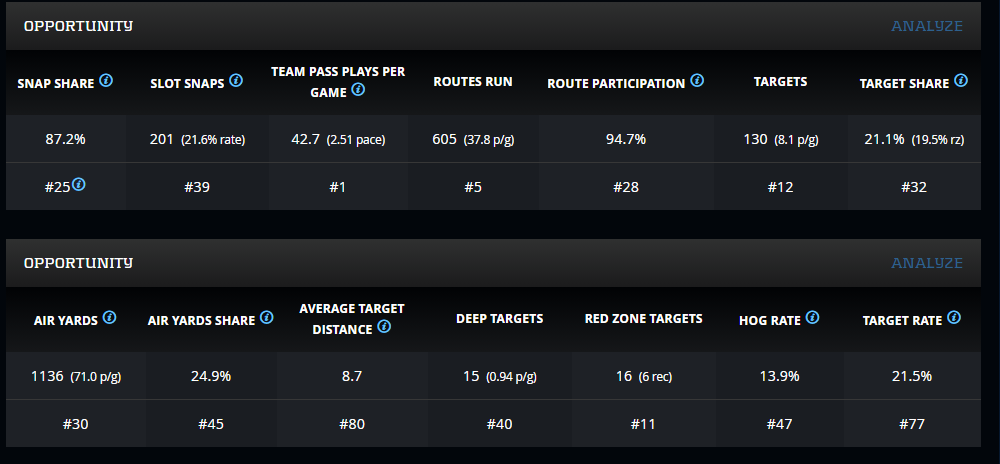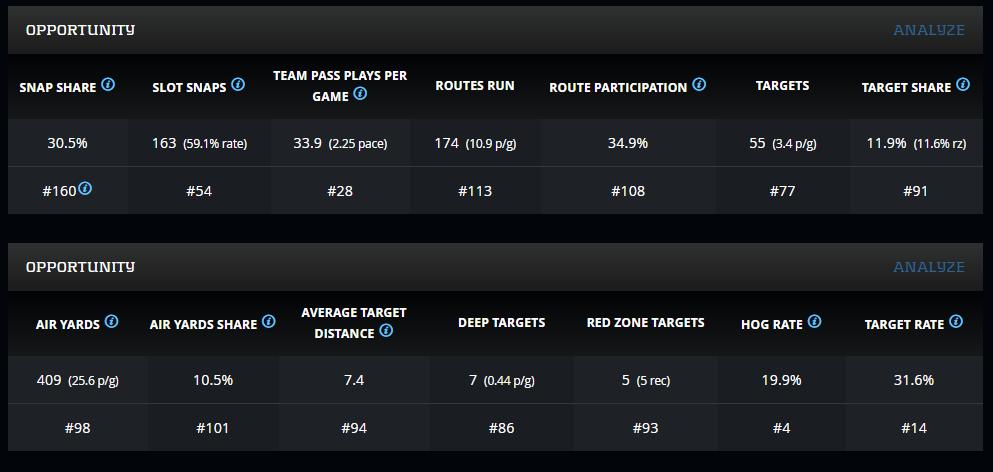Welcome, dear reader, to the latest in our offseason series looking at the advanced stats and metrics we use here at PlayerProfiler.
Over the last few months, we’ve looked at a whole host of metrics. Hopefully, these have helped to explain how they can help us and you get deeper into the weeds when it comes to understanding the great game of American football. It is my duty this week to provide clarity as I refresh your memory regarding an old stat. All the while introducing a new but similar-sounding one. So, on that note, are Target Share andTarget Rate not the exact same thing? Let’s Meet the Metrics, shall we?
Target Share
In the words of our Terms Glossary, Target Share “measures the percentage of all passing targets directed at a particular wide receiver or tight end in games that that receiver was involved in the passing attack.” So if Team A attempts 10 passes, five of which are sent the way of receiver A, he will own a Target Share of 50.0-percent.
In fantasy terms, we should be targeting players that command a large share of their teams’ targets. But be warned, not all Target Shares are created equal. It is important that we look at a team’s total pass volume to provide greater context when it comes to appreciating how much work a pass-catcher will get.
In 2020 for example, Marquise Brown commanded a 25.2-percent (No. 12 among qualified wide receivers) Target Share for the Baltimore Ravens. Meanwhile, Amari Cooper on the Dallas Cowboys commanded a mere 21.1-percent (No. 32) Target Share.
However, 21.1-percent of the targets on the Cowboys amounted to 130 (No. 12) targets given their league-leading 42.7 Team Pass Plays Per Game average. Brown played on the team that averaged a league-low 27.4 Team Pass Plays Per Game. As a result, he commanded just 99 (No. 35) targets. As with most metrics, this is one that requires knowledge of another in order to provide true value.
Target Rate
Well, with that cleared up, what pray is Target Rate? I’m glad you are asking. We define Target Rate as “the ratio of total targets to total routes run by running backs, wide receivers, and tight ends.” So if receiver B runs 10 pass routes and is targeted five times, his Target Rate would be 50.0-percent.
It should come as no real surprise that the players with the highest Target Rate are also among those with a high Target Share. Davante Adams ranked No. 1 in Target Rate with a 32.3-percent mark. This is among 122 wide receivers with at least 150 pass routes. Adams drew a 34.1-percent Target Share, also No. 1 among all wide receivers. But it will surprise you, as it surprised me, that players who are among the league leaders in routes run are not automatically the front runners when it came to Target Rate. JuJu Smith-Schuster led all wide receivers in 2020 with 629 Routes Run. Yet he only managed a 20.3-percent (No. 51) Target Rate.
There was also a surprise player near the top of the Target Rate charts.
Braxton Berrios of the New York Jets ran just 174 routes, with 112 wide receivers running more. His 34.9-percent Route Participation rate trailed 108 other players. Yet, his Target Rate was 31.6-percent, trailing only Adams among players with 150 or more pass routes ran. Unsurprisingly, Berrios posted a 19.9-percent (No. 4) Hog Rate (which you can learn more about here).
Target Rate is another stat that can sound impressive in of itself. But when used in concert with other stats and metrics, it can be used to push up players that really don’t need to be in our thoughts when it comes to fantasy football. It’s a nice conversation starter if you want to talk to your mates about how much more work Berrios should have got in 2020. But those conversations are, I hope, rare.
Until next time, dear reader.













